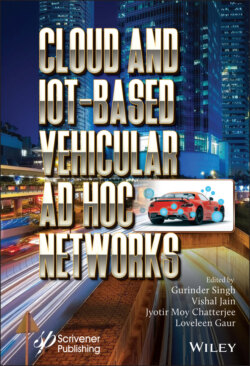Читать книгу Cloud and IoT-Based Vehicular Ad Hoc Networks - Группа авторов - Страница 62
3.4.1 Implanted Vehicle Sensor Applications
ОглавлениеThe proximity sensor is to detect the closeness of any object to a vehicle. The ultrasonic sensor is to convert the input signal into an electrical signal. The target object distance is obtained through emission of ultrasonic sound waves and threshold limit which alert the driver and to the processing unit. The vehicle parameter information like vehicle flow, speed, distance, temperature, pressure, position is calculated. This sensor has a high sensitivity to environmental effects. The electromagnetic sensors create an electromagnetic field around the bumpers and aware of the driver when an object enters.
Infrared sensor detects the energy generated by vehicles in the road surface objects. There are two types namely, Passive Infrared (PIR) and Active InfraRed (AIR) sensors or Light Emitting Diodes (LED) or Laser Diodes. The former detects the vehicles supported emission of infrared and collects the data. The later reflection time is obtained and data has been collected based on speed, vehicle position, traffic density, etc.
The anterior, side, and back portions of the vehicle are where the Radio Detection and Ranging (RADAR) and Laser Sensors are applied to determine the distance between obstacles and the sensor and to activate the brake that prevent potential collisions by using radio waves. Radar sensors are classified as the Doppler Radar system and Frequency Modulated Continuous Wave Radar. In Doppler Radar systems the frequency shift track density of vehicles and determine speed while the Frequency Modulated Continuous Wave Radar radiates continuous transmission power. RADAR has less weight that operates at different conditions and has a restricted field of vision and is highly susceptible to electromagnetic interferences. Generally, radar sensors are precise and accurate, installation is easy, increased multiple detection zones, and operating time is more.
Vehicle parameters such as vehicle speed, position, orientation, and velocity are determined by Inertial Navigation Systems (INS) which use gyroscope and accelerometer sensors. The purpose of the INS is to improve the accuracy, monitor the driver’s body movement in normal and abnormal conditions. Apart from these, night vision driver assistance system identifies long distance object on the road and detects objects such as human interventions, animals and other interventions.
